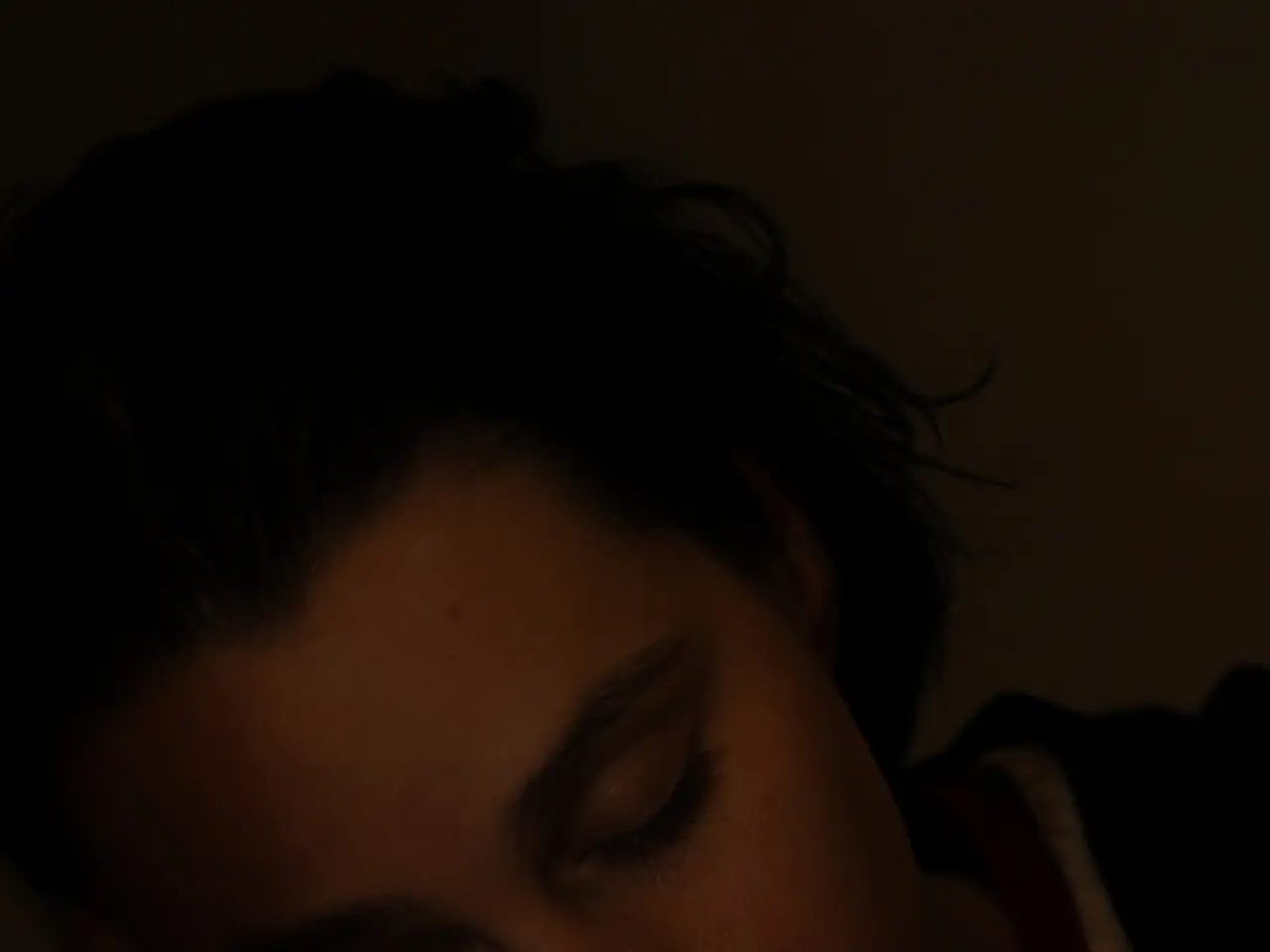Sleep Disturbances and Light Manipulation: Operating Mechanisms and Additional Insights
Light therapy, a treatment that involves exposing a person to artificial light for a set period of time, is being suggested as an effective method for managing insomnia [1]. This treatment is gaining popularity due to its potential to create stable and consistent sleep patterns, aid the circadian rhythm, and improve alertness during the day [2].
The key mechanism behind light therapy is its ability to mimic natural sunlight. By exposing oneself to bright light, especially shortly after waking up, the body's production of melatonin (the sleep hormone) is suppressed, helping to reset the internal clock disrupted in insomnia or circadian rhythm disorders [3].
A suggested effective dosage is once-daily sessions in the early morning for half an hour using 10,000-lux lights [1]. Commercially available light therapy units emit between 2,500 and 10,000 lux [3].
However, it's important to note that light therapy may not be suitable for everyone. People with preexisting conditions or those who take certain medications may not be good candidates for light therapy [2]. For instance, individuals with specific sensitivity to light, certain eye diseases, photosensitive conditions, migraines triggered by light, or those on photosensitizing medications should use caution or avoid light therapy without medical advice [1][2][3].
Potential side effects of light therapy are generally mild and temporary but can include eyestrain, visual disturbances, or temporary eye discomfort, headaches or migraines, nausea or dizziness (rare), agitation, irritability, hyperactivity, or mania (especially in people with bipolar disorder), skin irritation, and sweating [1][2][3].
Before starting a light therapy regimen, it's recommended to discuss plans with a doctor to cover the best time for use, session length, number of sessions, and possible precautions [4].
While light therapy may help with circadian rhythm and some insomnia symptoms, the effects are mild to moderate at best [1]. A person may need additional therapy, particularly if they have severe symptoms. Other therapies for insomnia include cognitive behavioral therapy (CBT), sleep hygiene education, relaxation therapy, and physical therapy [5].
For those interested in light therapy, a light box can be purchased for home use [3]. It's important to remember that light therapy may not cure insomnia, but may help alleviate symptoms.
References:
[1] American Sleep Association. (2021). Light Therapy for Insomnia. Retrieved from https://www.sleepassociation.org/sleep-education/sleep-treatments-and-therapies/light-therapy-for-insomnia/
[2] Mayo Clinic. (2020). Light therapy: What you need to know. Retrieved from https://www.mayoclinic.org/tests-procedures/light-therapy/about/pac-20385237
[3] National Center for Complementary and Integrative Health. (2020). Light Therapy. Retrieved from https://www.nccih.nih.gov/health/light-therapy
[4] National Sleep Foundation. (2020). Light Therapy. Retrieved from https://www.sleepfoundation.org/articles/light-therapy
[5] National Institute of Mental Health. (2020). Insomnia. Retrieved from https://www.nimh.nih.gov/health/topics/insomnia/index.shtml
- Light therapy, often used to manage sleep disorders like insomnia, involves exposing oneself to artificial light for a specified duration and is gaining popularity due to its potential to establish stable sleep patterns and aid mental health.
- By mimicking natural sunlight, light therapy can suppress the body's melatonin production, helping to reset the internal clock disrupted in sleep disorders, thus promoting healthy sleep and alertness during the day.
- However, it's essential to undergo a doctor's consultation before starting light therapy, as it may not be suitable for those with preexisting conditions or taking certain medications, and potential side effects like eyestrain, headaches, and skin irritation may occur.
- While light therapy can alleviate some insomnia symptoms, it may not cure the disorder, and people may require additional therapies such as cognitive behavioral therapy (CBT), sleep hygiene education, relaxation therapy, and physical therapy to address more severe symptoms.




